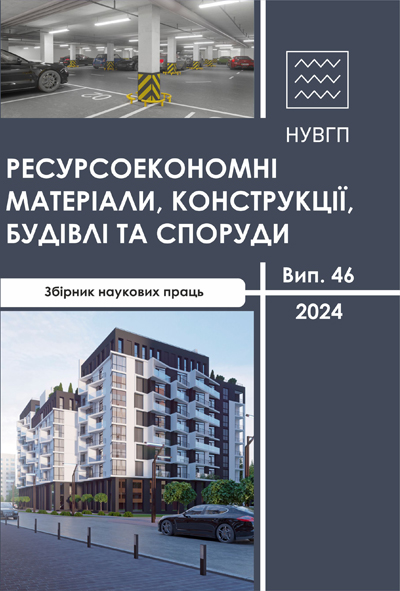TO THE QUESTION OF PREDICTING THE HARDENING OF COMPOSITIONS OF LIGHT CARBONATE SLAG CONCRETE
DOI:
https://doi.org/10.31713/budres.v0i46.14Abstract
Carbonate slag pressed materials, such as cement stone and other capillary-porous bodies, may contain, in addition to free, a certain amount of loosely bound water, which is retained by the forces of physical and chemical nature, but evaporates from the sample at temperatures up to 105°C. At this temperature, not only capillary and adsorption moisture, which can be contained in small amounts between the powder grains, evaporates from the samples, but also mostly water of loose crystal hydrates, that is, weakly chemically bound water. Evaporated flux, unbound in the process of hardening of the binder, forms two groups in the concrete. Pores vary dramatically in size: capillary pores and gel pores are very small in size (from 15x10-8 to 40x10-8 cm). Capillary pores, located between aggregates of gel particles, are thousands of times larger than gel pores. They contribute to the absorption and migration of water, which freezes in them under normal cooling conditions. Therefore, capillary pores appear as the main defect in the structure of the pressed material. When fully hydrated, the cement gel holds about 0.25% of the water in the pores of the gel (considering the mass of cement). The volume of capillary pores (1), the largest at the first moment after pressing, will be equal to the volume of water in the binder (B). As the carbonate slag binder hardens, the capillary pores are filled with hydration products, their volume decreases and will be: VI = В - 0.5 Ц

